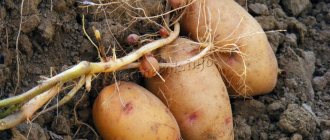What is it and what is it for?
Milk separation is an important stage of processing, during which the milk is separated into cream and a skim part (skim). This process not only extends the shelf life, allows you to obtain different types of fermented milk foods, but also contributes to the mechanical purification of this natural product from various impurities.
Electric milk separator
An electric separator is most often made of metal, but when choosing such equipment you need a competent choice of a reliable motor. Modern household milk separators are capable of:
- structuring milk by breaking it down into individual components;
- skimming milk;
- separation of cream of a certain degree of fat content;
- purification of the product from harmful impurities and bacteria hazardous to health.
The process of cleaning and creating dairy products using such equipment takes much less time and requires minimal attention.
What is dairy processing based on?
Fresh cow's milk is a suspension in which fat globules, called cream, are mixed with the heavier molecules of the rest of the milk. They are easily separated from the bulk of the product by floating. To speed up the separation of fractions, milk separators have been created. Subsequently, the heavy residue is separated into curd mass and whey, but this is after ripening. There are also separators to separate them.
If the final result of processing is 1:10, it means that for every 10 liters of skim milk, 1 liter of cream is obtained from 11 liters of milk. This is cream containing a large amount of butter and little liquid fraction. But you can get 3 liters of cream for 8 liters of skim milk. Such cream will be liquid and little butter will be obtained from it. The separator allows you to create a ratio from 1:4 to 1:12.
In everyday life and for the primary processing of milk, small farms use only cream separators or separators, which is the same thing. Cream separation occurs under the influence of centrifugal force, which throws heavy particles to the periphery, while light particles remain closer to the center. After separation, all that remains is to select the fractions into separate containers.
The milk separator is a customized system for the continuous supply of milk into a rotating disc drum and the selection of cream and skimmed milk, or skim milk.
Manual milk separator
It is important to remember that milk separators can be electric or manual. The manual apparatus operates with direct physical participation . The bowl must be untwisted using a special handle that transmits accelerated rotation through a special drive.
There are three holes inside the bowl for draining cream. Most often, hand-held equipment is made of plastic, which makes it lighter and more affordable . Metal devices are more durable and reliable. Certain advantages of manual equipment include the absence of an electric motor and the possibility of use in the absence of electricity.
general information
Dairy products have unsurpassed taste, as well as valuable nutritional properties. Need I say that such products, if properly stored, can be preserved for a very long time? Most farmers and farm owners are wondering where to put all the excess milk. Separation in this case is an excellent solution.
However, this will require a special apparatus called a separator. Thanks to it you can get, for example, cream from whole milk. The principle of separators for separating milk is quite simple and does not require any special knowledge to use. You just need to pour whole milk into the machine, press the button, after which you will receive skim milk and cream after a while. Whole milk contains fat in the form of fat globules. Their density is much lower than the density of the water component of milk. When, during the process of milk separation, the drum of the apparatus is spun under the influence of centrifugal force, this fat begins to gradually separate from the skim milk. Since its density is less, it will be easier to return; as a result, it is forced out to the middle of the drum, after which it is discharged through the drainage system. After separation, the skim milk is discharged through another outlet of the machine.
It is important to note that during separation the working mass is also cleaned of impurities, sediments and mechanical impurities. As a result, you get a healthy and purified food product in the form of skim milk and cream.
Features of separation in the dairy industry
Milk separation is an important processing step. During the process, the product is split into fatty and fat-free components. This type of processing also provides mechanical removal of contaminants. There are no changes in the chemical composition of the separated fractions.
Qualitative factors influencing separation:
- If the liquid is thick, the quality of the resulting product will decrease. The degree of thickness is reduced by heating the milk. The quality of the process is also affected by the difference in the densities of the liquid being processed. It also increases with heat.
- If the milk is fatty, the separation process slows down. This is due to the fact that fat is heavier than the aqueous medium. The performance of the separator decreases. Inside the device there is a package of so-called plates (for cleaning) - the separation speed can be improved by increasing their number.
- The slowdown in separation is affected by incorrect technological processes used in the industrial pumping of milk. Rough pumps cause fat particles to become irregularly shaped. When they are round, separation is easier. The process is faster with larger particles. If they are small, then separation slows down.
The main feature that influences a good result is the temperature of the starting product. According to the instructions for household separators, the optimal mode is 35-45 degrees.
At higher temperatures, the efficiency of fat breakdown is better, but there are some minor nuances. To improve separation, it is enough to heat the liquid to 45 degrees. At higher temperatures the fat yield will deteriorate.
High-temperature separation mode is used in industries with heating up to 60-80 degrees. At the same time, the quality indicators of the equipment used are improved. The disadvantages of high temperature mode are as follows:
- cream getting into the return stream;
- the appearance of foam;
- splitting of fat globules into small parts.
Due to the separation of cold milk, the productivity of the equipment decreases. Other disadvantages of low temperature mode:
- partial crystallization of fat;
- increasing the viscosity of cream.
Features of home separation
As mentioned earlier, you can easily separate whole milk at home. However, there are several methods here that will depend on the main goal. Let's look at them separately.
Getting the cream
One of the best methods for using milk is to initially separate it into cream and skim milk, and then use them separately. For example, cream can be used to make butter and sour cream. Skim milk is used to make cottage cheese.
There are two methods for obtaining cream from whole milk: separation and settling.
Advocacy
The extraction of cream using this method is carried out according to a specific algorithm. First, fresh milk must be poured into some spacious container and placed in a cool place. After 18-24 hours, a layer of cream should rise and form, which is subsequently poured into a separate bowl. This method has several disadvantages: about 1% fat remains in skim milk after this procedure. In addition, during settling, milk very often turns sour.
Separation
The most rational method is separation. At home, it is best to use small devices with a capacity of 30 to 100 liters per hour. As mentioned earlier, the drive can be electric or manual. It is recommended to install separators in a heated room on the edge of a stable table or on a special stand vertically without any distortions. Disassembly, assembly, and maintenance of the separator are carried out in accordance with the instructions that come with it.
Preparation
Before starting the main process, you need to pass a small amount of hot water, about 70 degrees, through the drum of the device, so that it warms up. Milk is released into the drum only after its normal rotation speed has been reached.
Fresh milk is used for separation. It's best to take a pair. What should the milk temperature be for separation? If it is cold, then it must be heated to about 30 degrees. At this temperature it will degrease better.
Boiled or pasteurized milk, as a rule, is processed much worse, and large fat losses also occur when milk is separated.
Main process
You must first tie gauze, folded in several layers, or some other suitable fabric through which the milk can be filtered when filling it, to the receiver of the device.
After this, smoothly and slowly, increasing the speed, the handle of the device rotates up to 65 rpm. If you are using an electric separator, then it must be plugged into the network. When it reaches the required number of revolutions, you need to open the receiver tap, after which the milk will begin to flow into the drum for further separation. To ensure that this process is continuous, milk is periodically poured into the receiver.
The level of cream fat can be adjusted by turning the drain screw, which has a square hole. If you turn the screw to the right, the cream will have more fat. If you turn the screw to the left, the fat content will decrease.
At the end of the separation process, you need to pour up to 1 liter of skim milk into the receiver, without rotating, turn off the device. Wait until the cream flows back out of the hole. This indicates that all the milk fat has been removed from the drum, which means it is necessary to turn off the receiver tap.
Ending the process
When separation is complete, the drum and dishes must be disassembled and washed with cold water, as well as a warm soda solution and clean water. All separator parts are then laid out on a table to dry. The rubber ring is washed in clean water and dried. All plastic parts of the device cannot be stored in sub-zero temperatures, as they then become too fragile.
Butter
To make butter, you will need a butter churn. Using this device at home, you can make various types of products: peasant, Vologda, sweet-cream, salty, unsalted, sour-cream. The process of separating products in separators also allows you to preserve microbiological properties.
To make butter, cream is used, containing about 30% fat. Preparing them for churning into butter will involve pasteurization, cooling, and also ripening.
They are pasteurized without holding at a temperature of about 90 degrees. The product is kept at this temperature for about 30 minutes. During pasteurization, the cream must be stirred periodically. It is not recommended to transfer pasteurized products to another container. Whip the cream into butter at a temperature of about 10 degrees. The duration of churning is from 15 to 40 minutes.
The churn is filled to no more than 3 quarters of its capacity. Whip the cream until butter grains are formed, the size of which is about 3 mm. To combine the grains into larger ones, you need to make several slow turns using a butter churn. The finished oil is immediately sent to the refrigerator and stored at a temperature of 1 to 4 degrees.
Main process
You must first tie gauze, folded in several layers, or some other suitable fabric through which the milk can be filtered when filling it, to the receiver of the device.
After this, smoothly and slowly, increasing the speed, the handle of the device rotates up to 65 rpm. If you are using an electric separator, then it must be plugged into the network. When it reaches the required number of revolutions, you need to open the receiver tap, after which the milk will begin to flow into the drum for further separation. To ensure that this process is continuous, milk is periodically poured into the receiver.
The level of cream fat can be adjusted by turning the drain screw, which has a square hole. If you turn the screw to the right, the cream will have more fat. If you turn the screw to the left, the fat content will decrease.
At the end of the separation process, you need to pour up to 1 liter of skim milk into the receiver, without rotating, turn off the device. Wait until the cream flows back out of the hole. This indicates that all the milk fat has been removed from the drum, which means it is necessary to turn off the receiver tap.
Design and principle of operation of the separator
All separators can be divided into:
- production;
- for the household.
Industrial units are large in size. They allow processing up to several tons per day.
Household devices are widely used in private households. They are simpler in design and operation. The devices do not require time and effort for maintenance.
Separators designed for farmers can process up to 10-20 liters per day.
Types of devices by purpose:
- cream separators split the whole product into fatty and low-fat;
- normalizers are used to produce normalized milk;
- cleaners remove dirt and foreign matter;
- universal separators perform several functions;
- curd units separate the curd and whey;
- classifiers clarify milk.
There are devices that clarify and degrease whey.
Various types of units are often used in dairy production. In households, a universal household device is more often used.
The design of the devices is:
- open;
- semi-closed;
- closed.
Open devices are simple and can be portable or stationary. The disadvantage of the devices is that due to contact with oxygen, milk foams, and this reduces productivity.
In semi-closed units, the drink still has contact with air, but the processed products are redirected into containers through sealed tubes. The advantage of the devices is the sterility of the supplied substances.
Closed devices are complex, they are often used for industrial purposes. Without them, it is impossible to launch a line where raw materials will be processed.
The pipelines of the devices are completely sealed, there is no air access to the original product. The processed substances are obtained absolutely clean, without mixtures of odors.
The drive type of household separators is:
- manual;
- electric.
Devices with electrical equipment are the most convenient to use and more productive. Manually operated devices are independent from electrical networks and are affordable.
A manual or electric milk separator separates the original product into fat and skim milk due to the rapid rotation of the drum. In this case, the liquid is in a bowl of a convenient size, and it is acted upon by attractive forces, which contribute to the concentration of the liquid near the walls.
Fat globules are light, and therefore, when moving, they tend to its axis. If the rotation is fast enough, it takes very little time to split.
In this case, a stream of white liquid appears, which is called skim milk, and a yellowish thick stream is cream. The drum rotation speed is 10-15 thousand revolutions per minute. Further mixing of separated products is eliminated thanks to special outlets.
They are arranged in a distribution area at the top of the drum called trays. Cone-shaped parts with perforations are located around the circumference with small spikes. They are usually laid out in a pyramid, forming a package in which the splitting occurs.
There is a special cavity in the drum for dirt. The entire structure represents the upper part of the separator. The supply of milk to the drum is dosed, due to a special float chamber. The bowl of the production separator itself is of decent volume. In household designs, the container size is about 5-7 liters.
The electrical part of the device is located at the bottom. All control elements are located on the housing with the electric motor. Manual separators are equipped with a removable handle.
The operating principle of manual and electric milk separators is similar. The design of both types of devices is collapsible. This is necessary for thorough washing of all parts.
What is a milk separator and why is it needed?
A milk separator is a device that allows you to separate milk from impurities or separate milk fractions. It can have different sizes and performance. Their prices also vary.
In any dairy farm, sooner or later the need arises for milk processing. A cow usually produces between ten and twenty-five liters per day during the cow's milking period. Naturally, this is too much for the needs of one small family, and the question arises: in addition to milk, you want to receive additional products in the form of cheese, butter, sour cream and other products.
The easiest way to make sour cream and butter is using cream. And let low-fat milk go on sale. In addition, the practical nutritional value for the body of milk from which the cream has been skimmed and milk that is in its original form is almost no different. This allows you to eat low-fat milk, and make butter and sour cream from cream. The separator is used to separate the cream. This is especially true due to the lack of normal butter on sale at all - real butter has become a scarce and dietary product, which can be obtained in any farm where there is a cow, having a special separator.
If there is more than one cow on the farm, then another problem arises - milk purification. When milking, a large number of milk clots enter the milk pan, since a cow is a living creature, and there may be various undesirable phenomena in its physiology, even if they are not associated with a violation of the health of the animal. In small volumes, the problem is solved by filtering through a cloth.
In large volumes, it is necessary to use a special separator to purify milk, which separates denser clots and solid particles.
Types of separators
There are two main types of separators - a regular one, which is designed to separate milk plasma, and a cream separator. The latter always works after clearing milk from clots, since it has thinner passages that are easily clogged with clots. Therefore, in a farm where oil production is planned, it is advisable to have two separators - a regular one and a cream separator.
Industrial separator-churn
Quite often, the cream separator is combined with another useful device - a butter churn. You can buy separators on sale that, while separating the cream, immediately churn it, making good, high-quality butter without the addition of vegetable fats and harmful ingredients.
Separators can also be divided according to performance and purpose:
- The household milk separator is designed for small volumes of work, has not very high productivity and a reduced service life. Among these devices, usually the majority are manually operated.
- A powerful separator for large farms and dairies must have an electric drive, the ability to fine-tune depending on the fat content of the milk, the ability to quickly and quickly clean it from contaminants, and is designed for continuous operation for several hours.
Electric milk separator
Models of separators with an electric motor are considered productive and powerful, and working with them is a pleasure. The only disadvantage of such units can be considered the necessary availability of power supply, which is not always possible to provide in hard-to-reach places. This type of milk separator is capable of preparing cream in a short time, but its cost is higher than that of manual analogues. The performance of home electric models can vary from 55 to 100 liters; manufacturers pay special attention to the safety of the devices.
Manual milk separator
Mechanical devices for separating milk into components are durable, they rarely fail and can be passed on from generation to generation. The home manual milk separator is made of materials that are resistant to corrosion. The power of mechanical units can process up to 80 liters of liquid in 60 minutes. Manual models are equipped with special fastening systems, which are necessary for stable fastening of the separator to the table.
How to choose equipment?
- If you have several cows/goats and you decide to open a small business producing fermented milk products, then a machine with a capacity of at least 100 l/hour is suitable for you. For example, “Motor SICH SCM-100-19” or “Falcon MS 100 metal”.
- If you are a novice farmer or are going to use the device at home, then the best option for you would be a device with a capacity of 80 l/hour. For example, “Farmer ES-01 80 liters” or “Penzmash Salyut ESB02-04 80 liters”.
- If you want to make cream or butter during your summer holiday in the country, i.e. If you do not do this regularly, but seasonally, then a separator of 50 l/hour will be enough for you. Such as “Ural M” and “Hydrounit Beryozka”.
- If you are counting on a full-fledged farm, choose equipment with a productivity of 500 l/h. Such as "Motor SICH 500".
Attention!
The separator should be installed on the edge of a flat surface in a heated room.
The best separator models
Household milk separators come in a variety of options. Types of separators differ in displacement volume, functions and other qualities. The best options popular among farmers are presented below.
Photo of separator R3-OPS
- “Motor Sich 100” is an electrical device weighing 4-6 kg. Consumes 60 watts. The bowls have a volume of 12 liters. Productivity – 80-100 l/hour. The cost is in the range of 3700-5400 rubles. The price depends on the case material (metal or plastic).
- The separator “Salyut ESB04” is an electric device, small in size. Separates milk from cream while simultaneously filtering it from contaminants. There is an overload protection system. Productivity – 50 l/hour. Cost – 4260 rubles.
- The Farmer separator can process up to 80 liters of milk. The weight of the structure is about 3 kg. Energy consumption – 80 Watt. The cost is within 3900 rubles.
- "Rotor" (Altai) runs on electricity. Power used – 100 Watt. Approximately 55 liters of liquid are processed per hour. Milk receiver with a capacity of 5.5 liters. The weight of the device is 3.5 liters. Price – 2250 rubles.
- The Neptune separator operates from the mains. Productivity – 50 l/hour. It has a stable rotation speed, and the milk fat content can be adjusted with a special regulator. The weight of the device is only 3.2 kg. Cost – 2950 rubles.
- “R3-OPS” (Penzmash) is a manual separator for cleaning or separating milk into fractions. Made from high quality plastic. Productivity – 50 l/hour. The capacity of the milk receiver bowl is 5.5 liters. Cost up to 3000 rubles.
A milk separator can greatly facilitate the work of the milkman. Such a machine is capable of making high-quality cream from fresh milk, butter, and some machines also separate whey from cottage cheese. For large and small farms they are very convenient and profitable to use.
Comparison table of characteristics
In the table below we once again list the main characteristics of the presented devices. By comparing them with each other, it will become easier for you to make a choice in favor of a device that fully meets your wishes and requirements.
| Separator name | Bowl height, mm | Diameter, mm | Dishes |
| HYDRAULIC UNIT SCM-80 No. 18 | 530 | 365 | 11 |
| ROTOR | 330 | 280 | 8 |
| HYDRAULIC UNIT BEREZKA | 310 | 650 | 10 |
| MOTOR SICH-100-18 | 300 | 520 | 12 |
| OM-3 | 280 | 500 | 5 |
| NEPTUNE | 290 | 335 | 8 |
| FARMER ES-2 | 290 | 335 | 12 |
Models of separators for domestic use
When choosing a cream separator, it is necessary to take into account the characteristics of each consumer:
- The one-time volume of processing will determine the choice of the volume of the receiving bowl. The more milk you need to distill, the larger the bowl you will need to avoid adding milk every minute. They produce containers of 5.5 and 12 liters.
- A universal separator will combine the purification of milk from impurities and the separation of cream.
- If more than 30 liters of milk are distilled daily, the best purchase would be an electric-powered machine.
- Metal parts are more durable and have a longer service life, but they are more expensive than plastic separators.
One of the most popular is the Motor SICH separator. This is an open type electrical household appliance for universal use. The marking depends on the output measured in l/hour. The separator can operate for an hour, then a break is required to cool the motor. The connection to the separator is made through a gearbox and an adapter coupling. The milk receiver is designed for 12 liters. The skim milk can be reduced to 0.05% fat content. The ratio of cream to skim milk can be 1:4-1:10. Such a unit costs from 6.5 thousand, depending on the configuration and the material used to make the working part.
The milk must be heated before separation. If you don’t have a thermometer at hand, the milk should be equal to the temperature of your fingers, which means that your finger feels the milk is slightly warm.
You need to open the tap and put milk into the system after the separator picks up speed, warms up, and idles for about five minutes.
The Farmer separator differs from the previous device by a higher speed of rotation of the disc drum, 1450 rpm, which means a more efficient separation of milk into cream and skimmed milk. The drum rotation speed is adjustable. The device weighs only 3 kg.
Manual separators RZ OPS are designed for low productivity. The set includes a 5.5 liter bowl. The plastic version of the separator costs 3 thousand, the metal version is twice as expensive.
Problems using the device
Each device has an instruction manual that must be carefully studied and followed. A possible cause of problems may be design features that were not taken into account during assembly. Some problems can be summarized and basic recommendations for correction can be given. However, you should always rely on the model used and information from the manufacturer.
The separated product does not thicken
- The reason may be excessively hot milk, in which case it needs to be cooled to the temperature of fresh milk, about 40 degrees.
- You also need to get rid of dirt from the drum. It should be disassembled, cleaned and rinsed from sediment.
- It would be a good idea to check the position of the adjusting screw. If it is screwed in too much, you need to turn it 1-1.5 turns.
- Thickness will appear after prolonged exposure to the cold. In cases where waiting time is limited, you can use a mixer. The main thing is not to overdo it and make butter.
Why does he drive so fat?
First of all, you need to try changing the position of the regulator. It can also be caused by milk that is too cold. The optimal temperature of the raw material is 35-45 C. The tap is not fully open. The float is not in place.
For what reason does it not separate from milk or does it poorly?
The most common reasons are:
How to use the separator: operating rules
For long service life of the machine and better quality of the dairy products produced, it is important to follow the following recommendations:
- Before work, make sure that the component plates are correctly arranged, the containers are clean, and also check the integrity of the electrical cord. Tighten the drum nut thoroughly.
- For reliability, secure the device to a flat surface using 3 screws and washers. Please note that separation should take place in a dust-free room with optimal humidity levels of 65%.
- In case of long-term storage of the electric separator at sub-zero temperatures, it is necessary to keep it in a warm, dry room for at least 6 hours before turning it on.
- Place the spouts of the skim milk and cream receivers in a convenient position and place a large container for skim milk and a small one for cream.
- Install the float chamber, insert the float into the cavity, insert the milk receiver and plastic plug into the conical hole at the bottom of the housing. Please note: the plug must be in the “Closed” position.
- Before turning on the electric separator, set the key switch to position “0” (“Off”). After this, insert the cord plug into the outlet.
- Adjust the fat percentage at your discretion. This is done using a specially designed screw regulator. If you need thick cream, then the screw must be rotated clockwise, if liquid - counterclockwise. Usually one turn in one direction or the other is enough.
- Pour strained heated or fresh steamed milk into the bowl and turn on the electric drive of the device. After reaching the full rotation speed of the drum, 30–40 s after switching on, open the tap, i.e. Turn the plug handle (pointed part) towards the notch on the edge of the receiver.
- After separating the milk suspension to rinse the device, fill the receiver bowl with 3 liters of warm water and pass it through the switched on separator to remove any remaining skim milk and cream. At the same time, make sure that the time of continuous operation of the machine does not exceed the standards recommended by the manufacturer.
- After that, the device must be disassembled and thoroughly washed in warm water. To do this, disconnect it from the power supply and wait until the shaft stops completely. Carefully remove the drum assembly without allowing it to wobble excessively. Using a special wrench, unscrew the nut, but under no circumstances completely unscrew the adjusting screw.
- The drum parts are washed in warm water. Milk and remaining dirt are removed with a brush, and the channels are cleaned with a brush, especially the square hole of the adjusting screw, as well as the three oblique holes of the plate holder. Drums of metal structures are cleaned with acids and alkalis, especially if we are talking about aluminum (otherwise parts made of this material will become stained and may collapse).
- In the reverse order of disassembly, assemble all washed and dried parts. Do not forget to lubricate the adjusting nut with any edible fat. Do not overtighten the nut and be sure to tighten it.
How to properly separate at home?
Goat
The separation of goat and cow milk is slightly different. Let's look at this process for a goat first:
- Prepare milk for separation (see principles above).
- Heat it to the desired temperature (37-40°C).
- Warm up the separator with warm water, pouring it into the milk receiver.
- Pour milk into the separator and start rotating.
- If there is a smooth noise, open the separator key. It is important to do this slowly and carefully!
- Adjust the toggle switch so that the resulting sour cream flows out in a thin stream.
Separation is complete. Now let's move on to the second stage:
- Run the milk again to remove any remaining fat from the separator.
- Place the separated cream in a warm place for a day.
To make the sour cream tastier, do not fill the jar completely (about 4/5 of the total volume).
Cow
Find out how cow's milk is passed through a separator.
To obtain cream by separating cow's milk, you should follow the following plan:
- Preparatory stage. It is necessary to warm up the separator by passing hot water (about 70°C) through its drum. After achieving normal rotation, you can pour in milk, which has already been preheated to 30°C.
- Main stage. Tie gauze onto the separator receiver, and then increase the handle rotation speed to 65 rpm.
If you are using an electric separator, plug it into the network. After this, open the receiver tap. In this case, you should periodically add milk to the separator so as not to interrupt the process. You can adjust the fat content of the cream using the drain screw. To increase the fat content of the cream, turn the screw to the right; to decrease it, turn it to the left. When the process is completed, pour 1 liter into the receiver. reverse and, without rotating, turn off the device. When everything has flowed out of the cream hole, you can turn off the receiver tap. - The final stage. The last thing to do is to disassemble the device and wash each part with cold water, warm soda solution and clean water. Then you need to lay out the parts separately from each other to dry.
All parts in the separator must fit tightly to each other. There should be no cracks or gaps between them.
Butter
To make butter, you will need a butter churn. Using this device at home, you can make various types of products: peasant, Vologda, sweet-cream, salty, unsalted, sour-cream. The process of separating products in separators also allows you to preserve microbiological properties.
To make butter, cream is used, containing about 30% fat. Preparing them for churning into butter will involve pasteurization, cooling, and also ripening.
They are pasteurized without holding at a temperature of about 90 degrees. The product is kept at this temperature for about 30 minutes. During pasteurization, the cream must be stirred periodically. It is not recommended to transfer pasteurized products to another container. Whip the cream into butter at a temperature of about 10 degrees. The duration of churning is from 15 to 40 minutes.
The churn is filled to no more than 3 quarters of its capacity. Whip the cream until butter grains are formed, the size of which is about 3 mm. To combine the grains into larger ones, you need to make several slow turns using a butter churn. The finished oil is immediately sent to the refrigerator and stored at a temperature of 1 to 4 degrees.
Factors influencing the process
There are several factors that affect the quality of separation:
- Liquid density. The higher it is, the lower the quality of the resulting product. The degree of thickness can be reduced by heating the milk.
- Fat content of milk. The larger it is, the slower the separation process occurs. In order to increase its speed, it is necessary to increase the number of cleaning plates that are located in the device itself.
- Incorrect technical processes. They also affect the separation rate, slowing it down. This happens because rough pumps deform fat particles during industrial pumping of milk. When the particles are round in shape and large in size, separation occurs much faster.
The temperature of the initial product is the main criterion that affects the quality of the final result. The optimal mode for household separators is 35-45°C.
Important Factors
If you want quality product processing, you need to pay attention to the factors influencing milk separation. These include the following:
- High quality raw materials. The fact is that without good milk, even the most expensive separator is not able to work a miracle. Here it is necessary not to overdo it with fat content, and its optimal content is considered to be 3%. It is also necessary to monitor temperature and acidity. Slightly warmed milk will be much easier to process. It is first necessary to clean the product from wool and other particles, especially if goat milk is separated.
- Correct operation. Use the separator only in accordance with the attached instructions. It is very important to properly care for the device, clean and rinse all parts after each separation process. Before starting work, you must carefully study the separator diagram; it is advisable to assemble it by studying the instructions. Before pouring raw materials into the receiver, you need to carry out one cycle with plain warm water. Thanks to this, all remnants of detergents after the last use are washed off or the top layer of dust is removed from the device.
It is important to note that all parts in the separator must fit tightly together, without gaps. For the greatest confidence in your own abilities, you can turn to professionals or watch special video tutorials.
As you can see, the separation process at home is not so difficult. To do this, you just need to purchase the simplest separator.
Making a milk separator with your own hands
A homemade apparatus for separating milk can be assembled quite easily with your own hands. The standard design includes a bowl for pouring milk and a motor that can spin it. The productivity of self-made equipment is quite low.
Due to the fact that such factory-made equipment is quite affordable and is represented by a large number of models, there is no need to manufacture such a device yourself. In addition, the purchase of material for manufacturing and the need to purchase tools makes doing it yourself costly, and also not very popular and in demand in our country.
Procedure for normalizing milk
- Determine the fat content of the original milk entering the separator.
- Adjust the performance of the separator in accordance with the data sheet.
- Using control valves (1) and (2), set approximately the same pressure at the outlet of cream and skim milk. Set the separator to yield cream of 20...25% fat content. Butterfly valve (4) is closed, butterfly valve (5) is open, control valve (3) is open. The cream is discharged through the pipeline (II) - (V), the return - through the pipeline (I) - (III). Determine the fat content and productivity of the resulting cream.
- Open the butterfly valve (4). Part of the cream will be sent to the pipeline (IV) to normalize the milk in the pipeline (III). Without changing the adjustment of the control valves (1) and (2), using the control valve (3), to ensure the fat content of normalized milk up to 3.2%, adjust the amount of cream discharged through the pipeline (V). When the flow area in the control valve (3) is reduced - when the valve is closed - most of the cream will be directed into the pipeline (IV). The excess portion of the cream is discharged through the pipeline (V). Depending on the fat content of the source milk, the fat content of the resulting cream, and the position of the control valve (3), the amount of excess cream discharged per unit time will be different.
- Use the position of the control valve (3) to adjust the amount of excess cream according to the table below. The table shows data for a separator productivity of 1,000 dm³/h (1 t/h). When using the table, you must multiply the data by productivity expressed in t/h. After 30...50 seconds, analyze the resulting normalized milk.
- The table contains calculated data for obtaining normalized milk with a fat content of 3.2%, depending on the fat content of the original milk and the fat content of the resulting cream. The accuracy of milk normalization depends on the accuracy of your analyses, the stability of the composition and supply of the original milk, the accuracy of measurements and adjustment of the amount of excess cream removed. Therefore, if necessary, adjust the valve (3) additionally in the manner described above.
- Analyzes on the fat composition of milk and its fractions are carried out in the manner accepted at the factory. To ensure efficiency of work and reduce losses of raw materials when setting up a normalization device, it is advisable to use express analysis devices such as “Lactan”, “Clover”, etc.
- The quantity of supplied milk and withdrawn fractions (cream) per unit of time is determined using counters - flow meters or measuring containers. For ease of measurement and to reduce measurement errors, install a container for receiving cream next to the separator.
Principle of operation
Thanks to the separator, ordinary milk is turned into sour cream and cream, cottage cheese and butter, and at the same time a minimal amount of effort is required from the farmer and villager himself.
The essence is to use the principle of centrifugal force. In simple words, the heavy part of the original substance is screened out to the side, but the fat is concentrated in the center of the device. It will be easier for a substance to separate at low viscosity and rapid rotation, and a separator will provide this best.
The operation of the device consists of the following stages:
- The bowl is filled with milk, after which it enters the drum, which rotates rapidly.
- The substance passes through the holes in the bowl, enters the separating plates and passes through them, rotating rapidly.
- Thanks to the action of centrifugal force, the milk is passed through the grooves of the plates.
- In the interceiling space, milk is divided into 2 parts - cream and whey.
- The substances move up the drum, the cream is discharged through a special channel, and the same happens with the whey.
- You manually adjust the fat content of the products - just increase or decrease the space near the center of rotation. A serving yields 2 different products, environmentally friendly and natural.











